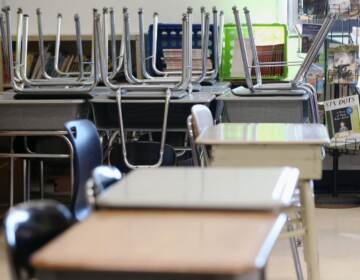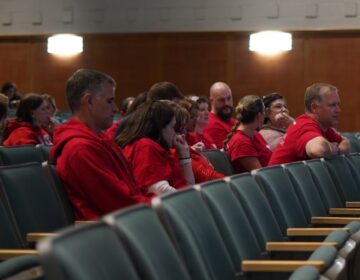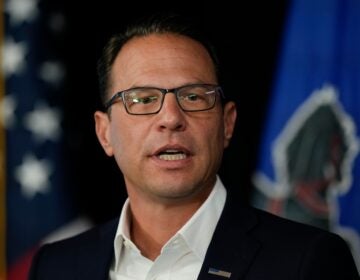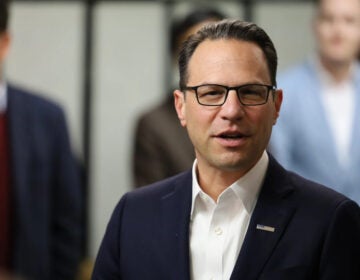Pennsylvania has a 3-year plan to tackle the teacher shortage
Making sure educators are paid well, come from diverse backgrounds, and feel supported on the job are among its goals.
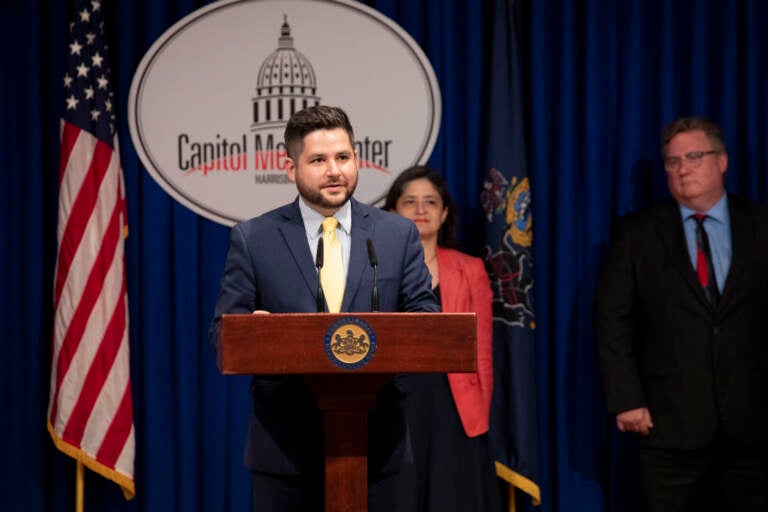
Acting Secretary of Education Eric Hagarty unveils the Department of Education's strategic plan to recruit and retain educators in Pennsylvania, in Harrisburg, PA on July 18, 2022. (Courtesy of Pennsylvania Commonwealth Media Services)
This story originally appeared on WITF.
State education leaders are rolling out a plan aimed at addressing the commonwealth’s K-12 teacher shortage.
Acting Secretary of Education Eric Hagerty said Monday that the plan aims to get more teachers into the classroom by 2025 – and keep them there.
“Teaching is the profession that unlocks the workforce for all other professions, so we must find ways to encourage more individuals to answer the call and enter the classroom,” he said.
Data outlined in a 20-page packet shows more than 7,600 new teachers were working in schools in the 2014-15 school year. While the number has ebbed and flowed in the past seven years, just over 5,000 new teachers were working at the start of the 2020 school year.
The number of teachers that completed their certification requirements also dropped by two thirds between 2010 and 2020, according to other Department of Education data.
The agency’s strategy singles out streamlining certification requirements, improving training programs, and offering teachers more on-the-job support as key to attracting more teachers.
Its five “focus areas” include:
- Meeting staffing needs at schools in each of the state’s geographical areas;
- Making sure educators and school staff come from diverse backgrounds;
- Improving how the Department of Education issues teacher certifications and other licensing;
- Ensuring teachers are prepared to face classrooms once they’re certified; and
- Allowing teachers to develop themselves professionally on the job.
Though it specifically calls for recruiting around 3,600 more people per year into teacher training programs by 2025, the plan does not spell out any specific goal for increasing the number of teachers in classrooms.
“It’s difficult to quantify statewide,” Hagerty explained. “The appropriate number of teachers is probably going to be different for each district based on different needs.”
Groups such as the Pennsylvania State Education Association were among those who offered input on the plan. Spokesperson Chris Lilienthal said some teachers have complained they’ve had to forgo breaks and planning periods to teach classes that lack a full-time staff member.
“If teachers have no opportunity to plan or to de-stress, that’s a toxic work environment,” Lilenthal said.
Laura Boyce of educator advocacy group Teach Plus said she previously worked as a principal. She explained she once had to teach a 5th grade class for six months as her school searched for a full-time replacement.
“I got to school at 5 a.m. I worked 14-hour days,” Boyce said. “I tried my best to juggle my administrative duties while meeting my student’s needs and it nearly killed me.”
Boyce added students have been feeling the effects of the shortage for years.
“Imagine being a student with no teacher: your class is being covered by a substitute, or split up among other classrooms, or experiencing a revolving door of tired teachers covering your class during their prep periods,” she said. “How can you learn with no teacher?”
Many of the teachers state leaders have spoken with said they don’t feel their communities or supervisors respect them enough. Boyce said both groups are key to improving that culture.
“Our policymakers can signal through their policies that they value teachers,” Boyce said. “Some of the legislation that we’ve seen recently that pits teachers against communities or presents teachers as people who are indoctrinating students certainly doesn’t help the perception…or the morale of teachers.”
“We have a lot of work to do to make teachers feel that respect and sort of get back to the days of ‘bring an apple to your teacher and thank them for everything they do,’” Hagerty added.
WHYY is your source for fact-based, in-depth journalism and information. As a nonprofit organization, we rely on financial support from readers like you. Please give today.


